#carolita johnson
Explore tagged Tumblr posts
Text
2024 Reads
Carolita Johnson - A Woman Becomes a Nightingale
Matt Drange - The Predators' Playground
Lauren Gill - NYPD Accused of Fabricating Domestic Violence Survivor's Murder Confession
25 notes
·
View notes
Text
A Case for Scanners.
Non-artists often assume that once a drawing is completed, the art process stops. As most professionals will tell you, that's not the case! Capturing an image for reproduction, and making sure that it represents the original work well, is oftentimes an art form of its own. Since this topic isn't something that has been given a lot of air time on here, I thought it would be fun to ask some folks who do a lot of non-digital work, with (seemingly little) processing, if they had any hard-earned advice on how to get a final image!
I hope everyone is having a nice summer, and that you all are making lots of art! —Jane
Roz Chast
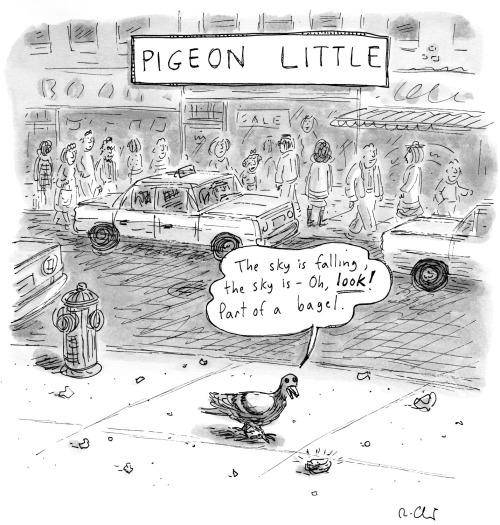
Find this print here!
How do you get images of your work? For reproduction, I use a basic Epson scanner I got on Amazon a few years ago (my old Canon one died). Cost maybe $175. My only complaint is that it only goes up to 8.5 (maybe 8.7) by about 11.5 inches. If the image is bigger, I scan it in parts and put it together. The Epson scanner is excellent. You can scan up to 1200 dpi which was useful when I did drawings that were 9 by 12 inches and they were blown up 9 by 12 feet, and they looked FAB. I was amazed. I also once scanned an embroidery that the NYer used on a cover and it worked fine.
But for just sending someone a quick pic of something, or posting to Insta, I use my camera. Oh, and for pysanky eggs, I use my camera. LOL, wouldn't be good to smash them flat in the scanner.
What are your best tips for getting a good image? If the item you want to scan is a little rumpled or wrinkled, press down hard on your scanner lid before scanning. Also, I use Photoshop to optimize the image--mainly brightness and contrast and to remove patch shadows etc. And for embroideries and pysanky eggs, I use my camera and photograph them in natural light outside. Not in bright sunshine or dark shade-- in between.
Does your method differ when capturing a colorful image vs something black and white? Not really. But I do adjust for brightness and contrast with Photoshop, no matter if it's in the scanner or the camera, b & w or color.
Joe Dator
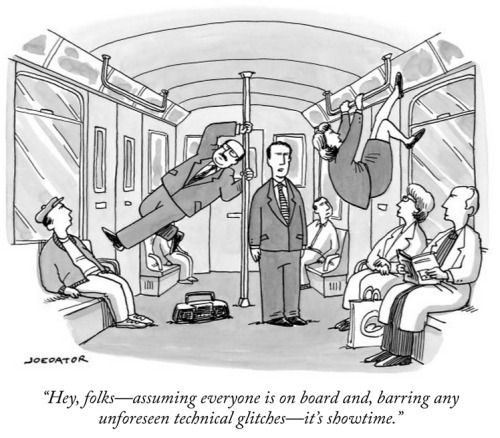
You can find this print and more here.
How do you get images of your work? I scan my images. Ever since The New Yorker stopped accepting original artwork, the cartoonists have had to scan their own work and send it as a digital file. It's been a source of some frustration for me, as I used to rely on the top-of-the-line scanners at Condé Nast's imaging department, but now the quality of my published work is dependent on whatever modestly priced scanner that I can afford to have at home. For a while I was using a Brother and then an Epson all-in-one printer/scanner, though neither were very good at capturing the nuance of wash shading. I've now got a Canon 300, which is a dedicated scanner, and is somewhat better, though not by much. It's adequate for its very low price, I suppose. All of this has led me in some cases to scan my work as line art and then add the grey or color areas digitally, or sometimes to bypass scanning entirely and just create digital art.
What are your best tips for getting a good image? It's always better to go a little bit darker and then lighten the image after the fact, because that way you've captured the information that is there. You can subtract information if there's too much of it, but you can't add in formation that wasn't captured in the first place. I always take a very high resolution scan, 600 dpi, and then adjust the image in Photoshop, mostly with the Levels feature. I'll also go in very close to the image and go over it with the eraser tool, removing any dirt or blotches that I see. This is made much easier if I remembered to Windex the glass before scanning! Best tip: clean the glass first! I have wasted hours of time cleaning up images because I forgot to wipe the glass clean before scanning!
Does your method differ when capturing a colorful image vs something black and white? No difference in how I capture the image from the scanner, but the way I will clean the image up in Photoshop differs slightly, because for a color image I will use the Levels as well as the Hue/Saturation and Color Balance features.
Amy Hwang
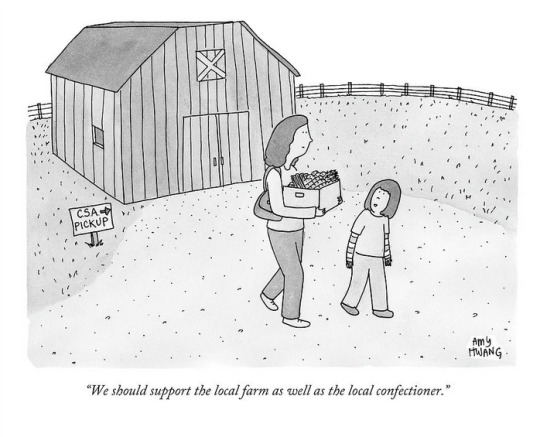
Find this image here!
How do you get images of your work? Flatbed scanner
What are your best tips for getting a good image? I used the photo setting to scan my work. For watercolor paper that isn't completely flat, I'll weigh it down with a stack of copy paper and place a heavy hardcover book on top of that. I'll also weigh the sheet down with my hands as the scanner bulb moves under it.
Does your method differ when capturing a colorful image vs something black and white? No.
Ivan Ehlers

Find this print here!
How do you get images of your work? If it’s a work of ink on paper, I’ll usually do the ink drawing first and then scan that just to be safe in case I screw it all up with the wash/color. If I screw it up, then I will do a digital wash/color pass in Photoshop. If all goes well, then I’ll scan the drawing again and adjust digitally as needed.
What are your best tips for getting a good image? Take the time to figure out your scanner and to learn which values will get lost in the scan and how to deal with that, either preemptively on the drawing itself or digitally after it’s scanned.
While scanning, if it’s a black-and-white image, scan in black-and-white. You’ll get more of what you want without the scanner trying to make sense of random color information that may exist on the paper. And the higher the resolution, the better the image (and information within the image) will be.
Once you get that image imported, throw it into Photoshop and hit Command-L to mess with the levels. This is where you’ll find the sweet spot of making the lines/wash darker, the mid-tones lighter (if you want to erase the background) or darker (if you want to show the wash/paper more) and your contrast (again, if you want to make the background paper ‘disappear’).
Also, depending on how the work is showcased (digitally, printed small on newsprint, professionally printed on expensive materials), you will learn what matters and what really does not. If people are just going to see the image on their cell phones, it doesn’t matter if the image doesn’t look absolutely perfect when zoomed in 6000%. If it’s for print on newsprint, there’s a limit to how much detail will show and how much color information will transfer. It's easy to get lost in a spiral of saying "It doesn't look exactly like the original!" Look at photos of original paintings, then go see them in real life. It never looks the same!
Does your method differ when capturing a colorful image vs something black and white? Black-and-white images are much easier to capture/edit in that the amount of information is dramatically lower than that of a color image. When working with black-and-white images, your concerns are mainly with levels (see above).
When working with color images, you still have to deal with the levels but add to the equation a step of color correction (or color mixing for those who consider the term ‘correction’ inherently pejorative and indicative of an error).
Getting color right is the hardest part. It’s like trying to find the simultaneous determination of position and momentum of an electron—You can either get a good line quality and contrast, or you can get good and true color, but you can’t get both. (This is of course me being dramatic. You can get both, but you better have a much better scanner than most of us can afford.)
If you need to ask how much a really good scanner is, you can't afford it.
Carolita Johnson
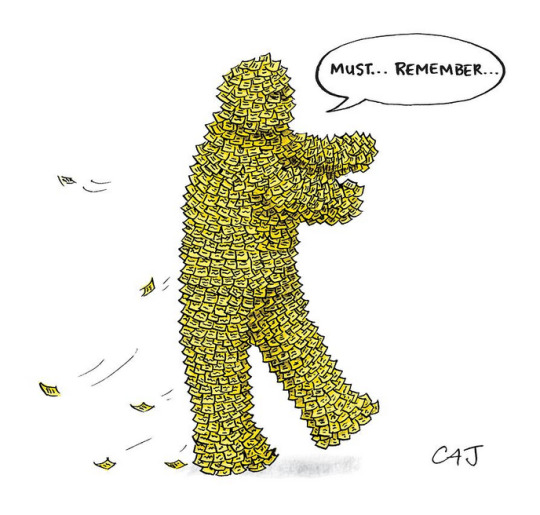
Find this print here!
Scanners are great for flat work without ripples. I flatten my stuff under two very thick, heavy pieces of plexiglass and with a piece of paper on either side of the original against the plexiglass after a very light fine misting with water if it’s too rippled.
Otherwise I remember Andy Pilsbury at TNY used to take photographs of fine color art — especially if it had a lot of texture— in his special studio.
Jenny Kroik
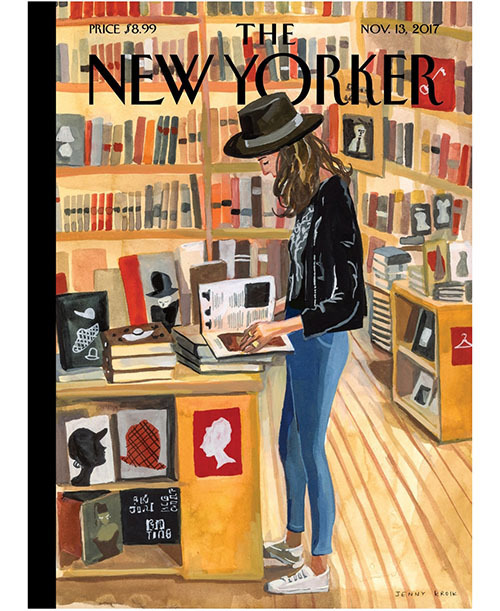
Buy this print here!
I use an Epson scanner. Mine isn't great, so I have to do a lot of Photoshop tweaking for color precision. I've been meaning to get a better scanner for ages! Get a nicer one, and you might not need to do as much color-correcting. (I got the cheapest one for like $70). Scan stuff at at least 600 DPI.
Also, my laptop has a retina display. I think they all do that now, I'm not sure.
Navied Mahdavian
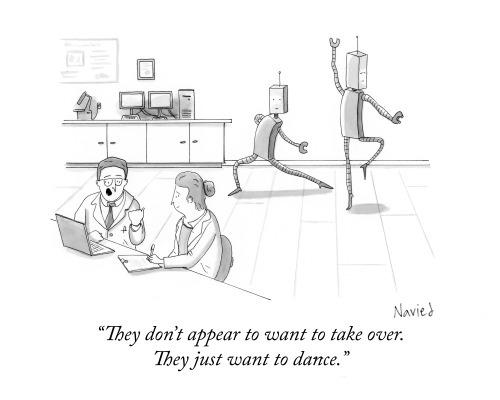
Find this print here!
How do you get images of your work? I use an Epson V600 Photo scanner. I've used a few scanners and it's my favorite.
What are your best tips for getting a good image? I usually scan at 600 dpi for finished images. I use Photoshop to clean up an image and adjust black and white (make whites true white etc.).
Does your method differ when capturing a colorful image vs something black and white? I usually do black and white, so I'll use the greyscale scanning setting. If I do use color I just switch it to color. Otherwise, all the same.
Michael Maslin

Find this print here!
How do you get images of your work? An Epson V550Scanner....probably 5 years old, still works well.
What are your best tips for getting a good image? Don't have tips. I just make sure the image on the screen looks as close as possible to the original piece. As I'm dealing with a simple ink line with some pencil added on, it's not a complicated replication. Rarely have to do anything with/to what comes up on the screen.
Does your method differ when capturing a colorful image vs something black and white? For me, it's fairly simple as the drawing is an ink line with a small amount of pencil added. I've noticed that color pieces invite messing around with "saturation" and those other tools. I almost always end up liking the "adjusted" image better than the original.
--
If you enjoy this blog, and would like to contribute to labor and maintenance costs, there is a Patreon, and if you’d like to buy me a cup of coffee, there is a Ko-Fi account as well! I do this blog for free because accessible arts education is important to me, and your support helps a lot! You can also find more posts about art supplies on Case’s Instagram and Twitter! Thank you!
#how to scan art#how to draw new yorker cartoons#roz chast#joe dator#navied mahdavian#carolita johnson#jenny kroik#michael maslin#amy hwang#ivan ehlers
15 notes
·
View notes
Photo
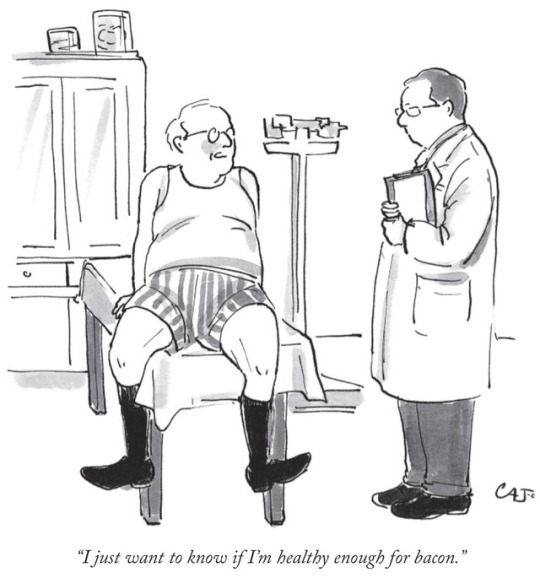
***
Carolita Johnson / New Yorker, February 18 & 29, 2019
6 notes
·
View notes
Photo
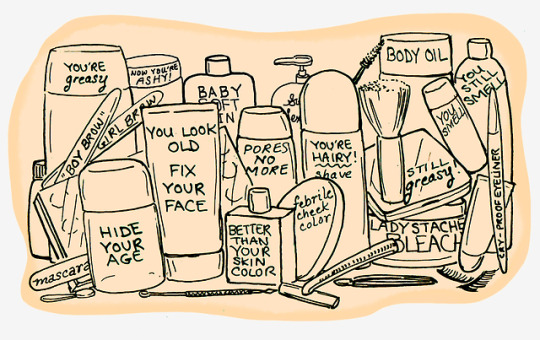
”By the age of 18, I knew, without yet pinning it down as a sociological observation, that being a woman meant spending a major part of my time and income on the upkeep and outward appearance of my body. The minimum requirement was making sure it didn’t smell or look unkempt. The ideal was to look simultaneously young, clean, fresh, soft, nubile, sexy, and magical, at all times (and for as long as possible as I aged). But not so much so that I could be ridiculed as vain, or be blamed for being raped.
I spent a good hour every morning deploying all these cosmetics and “personal care” products, then dressing up in fashionable clothes. I’d spend more time shopping to restock, revise, and research new variations of it all. There is no doubt why girls and women do their shopping together as a social pastime — it kills two birds with one stone. You don’t really have time for all that shopping and friendship, in addition to dating, school and employment.
When I finally became sexually active, I surmised that love and/or great sex were the payoffs for all this priming and presenting of my body. It wasn’t long before I learned that with sex and/or love came new duties: sustain a continual fantasy of sensual femininity for my lovers. Now I had to make my body soft, hairless and inodorous in places no one ever saw (or smelled up close) before: under my clothing and under my underclothing. It was as if my underclothes became my outer clothes: it seemed like I was losing bodily sovereignty and a layer of boundaries every time I passed a milestone in my life as a woman.”
“A Woman’s Work: The Outside Story,” by Carolita Johnson.
1 note
·
View note
Photo
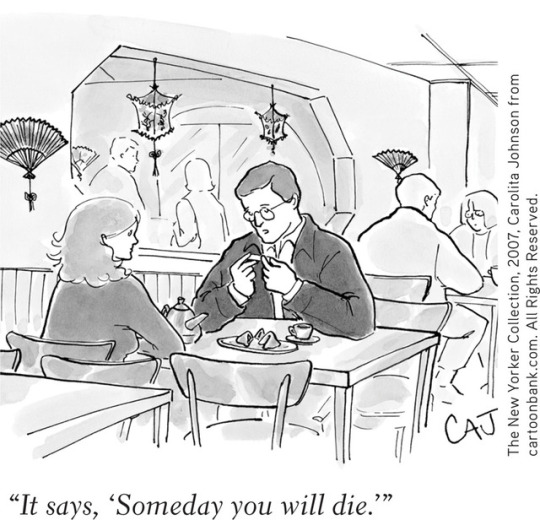
1 note
·
View note
Photo
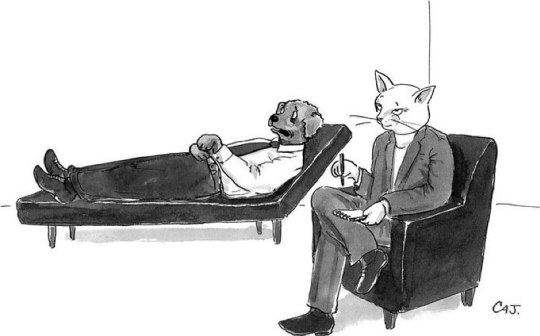
Caption Contest Cartoon by Carolita Johnson My Entry in The New Yorker Cartoon Caption Contest #812 https://attemptedbloggery.blogspot.com/2022/08/my-entry-in-new-yorker-cartoon-caption.html #CAJ #CarolitaJohnson #Dog #Cat #Psychotherapist #TheNewYorker #Cartoon #CaptionContest https://www.instagram.com/p/CgvsM4iMF3o/?igshid=NGJjMDIxMWI=
0 notes
Text
I wanted him to make more time for me by taking over a little of what I was doing for us, and to do so on a routine basis instead of for special occasions or to placate me when I was in a “mood.”
No one ever regretted taking care of the person they loved, at any price.
Even so, I wasn’t sure he’d have done as much, sacrificed as much for me — or if any man would have. I still think I was implementing a uniquely, in sociological terms, womanly strategy. But being able to articulate this to myself didn’t help in practical ways, even if it somewhat helped psychologically.
https://longreads.com/2018/06/20/a-womans-work-home-economics/
0 notes
Photo
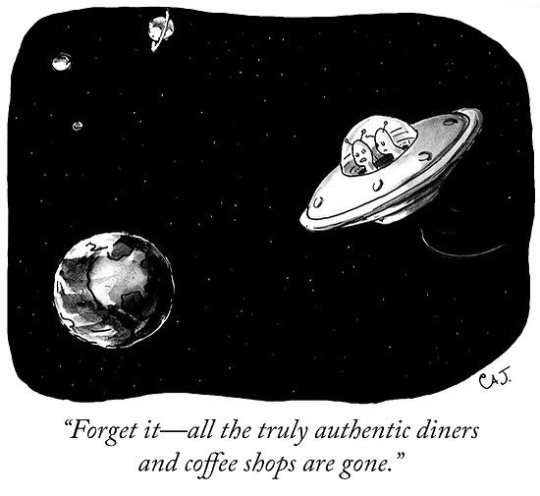
A cartoon by Carolita Johnson. #NewYorkerCartoons See more cartoons from this week’s issue: http://nyer.cm/bStsTmE (at Kew Gardens) https://www.instagram.com/p/Ca5pvVDLzbZN-APjzsRsHTfPyxrIJcmJJI4BrU0/?utm_medium=tumblr
0 notes
Text
"Mood Music" Caption Contest Commentary with Lawrence Wood –
“Mood Music” Caption Contest Commentary with Lawrence Wood –
Carolita Johnson’s cartoon is set in an office, where a man behind a desk is saying something to a younger man seated across from him. To the left of the man who’s speaking is a violin player, the kind you might see in certain Italian restaurants. Violin music is often used to create a sad mood, so I thought the man behind the desk might be terminating his employee: “Jenkins, we’ve had a rough…
View On WordPress
0 notes
Text
Navied Mahdavian.
Bio: I am Miami-born (my apologies in advance), streets of hard knocks-schooled (well, suburbs outside San Francisco), currently living in Salt Lake City by way of rural Idaho, with my eyes firmly set on NYC, if only to avoid people's surprise that I don't, in fact, already live in NYC. I've been a cartoonist for The New Yorker since February 2018. My work has also appeared in Wired, Alta Online, Private Eye, Reader's Digest and wherever else I can convince to publish my cartoons. I'm currently writing my debut graphic novel entitled, This Country, about my three years in middle-of-nowhere Idaho (details/news forthcoming!). Before becoming a cartoonist, I taught the 5th grade, where I learned most of my jokes.
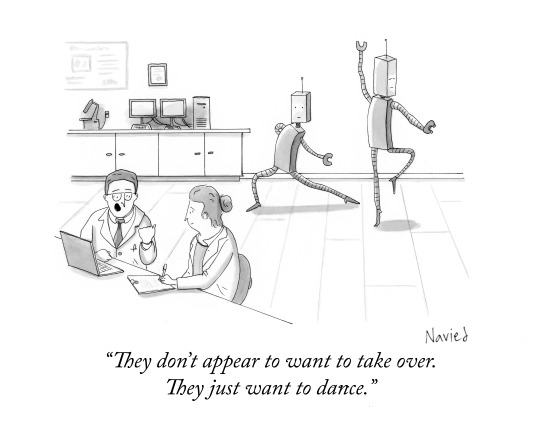
Find this print here! Tools of Choice: I'm what you might call a tools-of-the-trade-idiot. When other cartoonists talk shop about what they use, I usually just nod my head and think about important things like why the word "vacuum" has two u's in it. I do, however, have a tool box of trusty tools I have learned to use over the past few years. I draw with a Pentel P205 .5mm mechanical pencil. When I first started out, I used pencils with letters like H and B in their titles, but I could never get the fine lines I was looking for (and plus, I had to sharpen them, which is a whole thing). For inking lines, I typically use Microns. For a while, I exclusively used the .005 but as my confidence in my drawing has increased, so has the size of my pen tips. In order to get dynamic line variation, I sometimes press down harder than I should, which destroys my poor microns. For washes, I use Bombay Black India ink diluted in water and Winsor and Newton brushes. For a long time, I just used the size 1 brush (you can see a pattern here), but now I use the size 3 (*gasp*). I recently discovered a W&N round 1 brush which has completely changed my ink washes. It allows me to do really delicate and tiny ink washes.
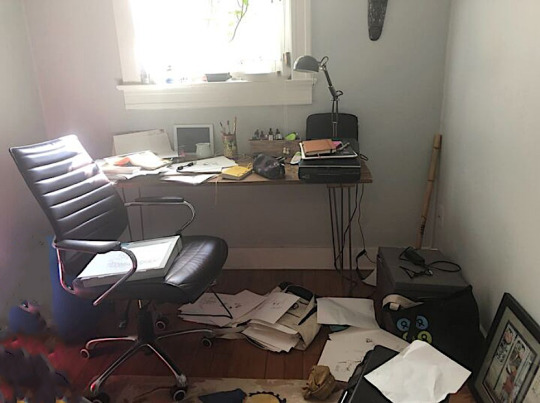
My desk after the Tuesday submission deadline
Tools I wish I could use better: Everything that I currently don't know how to use or even know exists (to misquote Donald Rumsfield, "There are known unknown drawing tools.")! Things I know exist and hear about all the time but have no idea how to use are: non-photo blue pencil, Procreate, watercolor, oil paint, nib pens, brush pens, correction pens, and those gel pens the girls were into when I was in middle school.
Also what is a slide rule?
Tools I wish existed: A pen that could draw correct perspective on its own. Having never studied drawing formally, I sometimes struggle with perspective. In a review of my dancing robots cartoon, the now defunct website Cartoon Companion said the composition and perspective were "contrived" (they also said my first cartoon was "D.O.A." but who remembers these things?).
Tricks: I draw directly onto the finish paper I use (I use Arches 140lb Hot Press paper). I used to draw rough drafts on printer paper and then trace it for my finishes, but I read an interview with Carolita Johnson where she said that she chucked this stage at some point which made the whole process so much faster. I also shamelessly reuse elements from my old rejected cartoons. I have an Artograph LightTracer light box and constantly trace my old cartoons (it works great, but it's chunky and looks like a children's toy. Point of fact, I actually stole it from my old classroom).
Misc: I balance drawing cartoons that I think the New Yorker would go for with cartoons that I know they would never buy. Which isn't to say that I don't submit those cartoons to them, because I definitely do, but it means I have drawn (and submitted) way too many cartoons with animals in bed (my apologies to Emma Allen). Part of me hopes they'll buy one (they won't), but they make me laugh.
Website, etc:
Instagram
Website
Prints
2 notes
·
View notes
Text
A Woman’s Work: Becoming a Home of One’s Own
A Woman’s Work: Becoming a Home of One’s Own
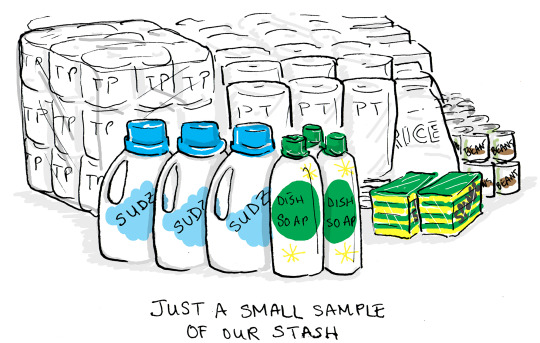
Carolita Johnson | Longreads | December 2019 | 24 minutes (6,000 words)
This essay began very differently a few months ago. I had started writing it at the same time as the previous one in this series, “Till death do us part,” and, just as I observed while writing the fifth one, the very act of writing it resulted in a real-time evolution of my understanding, processing, assessment, and…
View On WordPress
0 notes
Photo
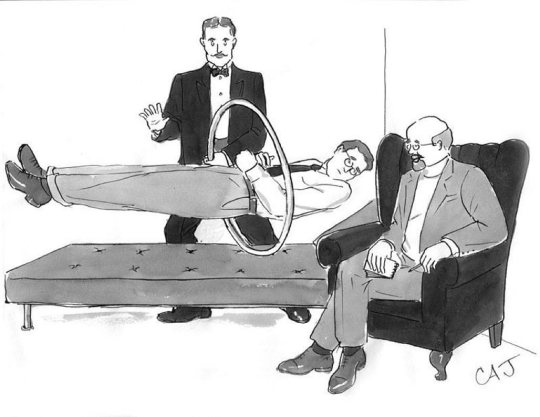
Caption Contest Cartoon by Carolita Johnson The Cartoon Collections Caption Contest #118 buff.ly/3vWZdE8 #CAJ #CarolitaJohnson #CartoonCollections #Magician #Psychiatrist #Cartoon #CaptionContest https://www.instagram.com/p/CM1DEQQBiTX/?igshid=x1qsyhb7wdxi
0 notes


